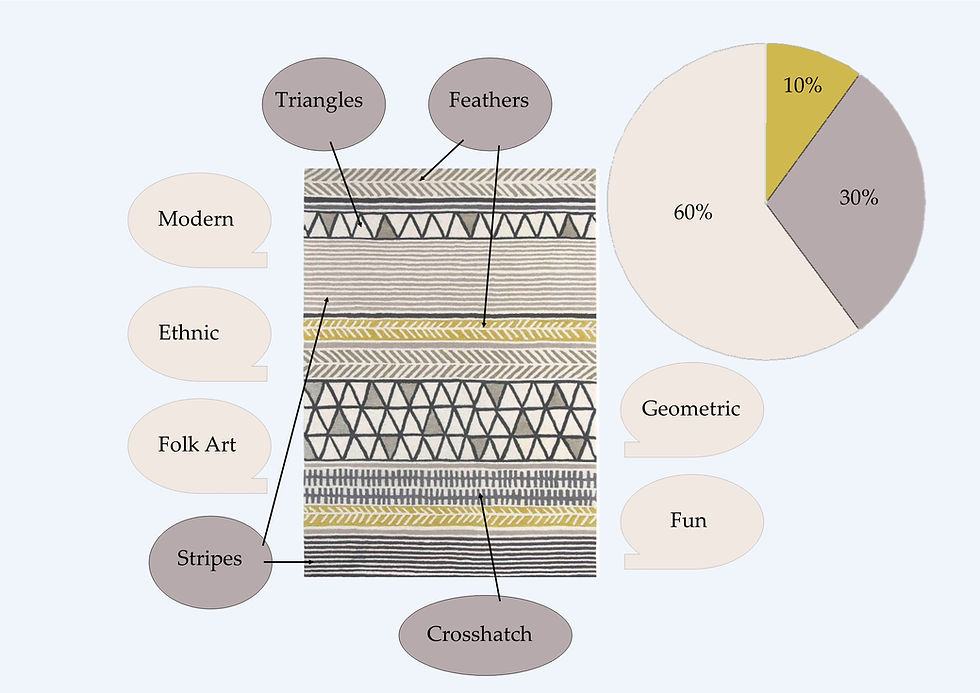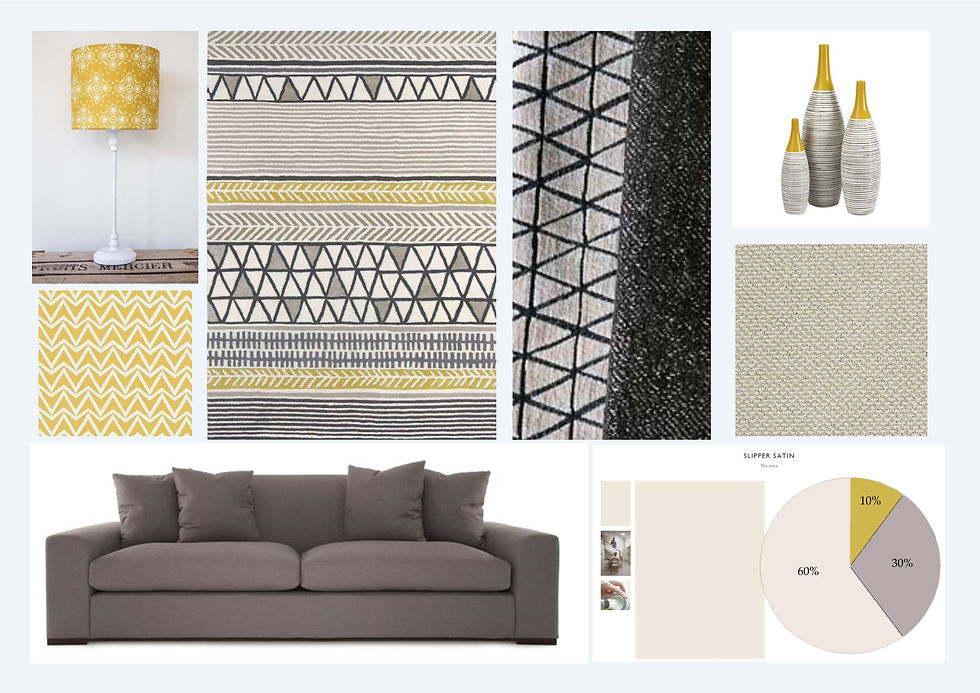How to Design a Whole Room from One Item
- Liselle
- Jan 17, 2019
- 3 min read
For some people having to design a room from scratch can be very daunting and the results can be either catastrophic or a little underwhelming due to playing it too safe to create a style that wows.
This guide asks you to find just one item that you love, and talks you through how to go from that one item to a complete scheme.
Choose Your Starting Point
Every scheme needs a starting point from which to develop your ideas. This should be something you are in love with, that represents you and suits the space it is going into. This can be anything from a lamp, to a painting, a fabric or a rug. It doesn't really matter as long as it makes you happy and is indicative of the overall feeling you want to achieve in the room.

In this example, I have chosen a Scion rug as the starting point for the design. This one item gives us a great deal to work from to put together a full scheme, and as a chosen "loved" item it is reasonably safe to assume that other items that complement this rug will not just work well, but will also be loved in their own right.
Colour Scheme
The 60%/30%/10% rule is a great starting point to put together the colours for the room. Here I have lifted three colours directly from the rug.
The 60% makes up your base colour, 60% referring to the amount of the room that presents this colour. This will usually be your paint colour and background colour in fabrics and so forth.

The 30% is your secondary colour, making up around 30% of your featured palette. Getting this colour right is actually really important as it needs to contrast against your base tone and complement your accent colour. You want your accent colour to pop and stand out, your secondary colour should accentuate this. Your secondary colour is usually represented on an accent wall, sofas, curtains and bed-linen.
Your 10% accent colour should be used sparingly and well balanced throughout the space. This usually appears on cushions, lampshades, vases and perhaps cleverly worked into other patterns in the room.
Key Words
Identifying key words that come to mind from your loved item is a great way to identify your theme. I will often give a scheme a title to help summarise what I am looking to achieve like "A Blush of Spring" or "Harbour Horizons".
The key words inspired by our rug example here are:
Modern
Ethnic
Folk Art
Geometric
Fun
You can now use you key words as a check list against anything else you are thinking of putting in the room. This helps to keep the style consistent so you don't end up with too many fighting elements or an end result that feels confused. An item may not fit all of your keywords, but if it doesn't consider whether it can still work with those key words, or is it essentially incompatible.
Pattern Combining
Putting patterns together is one of the most common problems for budding designers. It is very tempting to choose individual items that you love only to find that when you put everything together it just doesn't work, This sometimes leads to people developing a fear of pattern and just sticking to plains or stripes everywhere, which is fine, but unlikely to give you a look to get excited about.
You can almost always combine simple patterns, i.e. a floral, a plain and a stripe without going far wrong, but if you want to get a bit more involved, here's how:
Spot patterns in your patterns! Mirroring shapes is a great way to ensure that your pattern combining works. These are the pattern notes taken from our rug:
Triangles
Feathers (Stylised)
Stripes
Crosshatch
If you make sure that the other items you are putting in your room fit with your keyword check list, are colour appropriate based on what and where they are in the room and that your patterns are stylistically similar to those you have picked out in your pattern notes you are giving yourself a really good chance to get that "WOW" look you are aiming for.

Comments